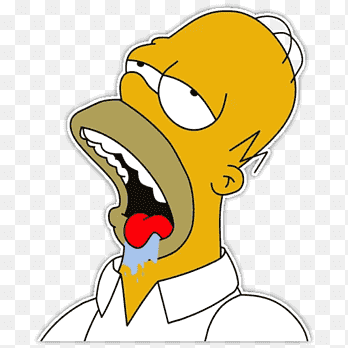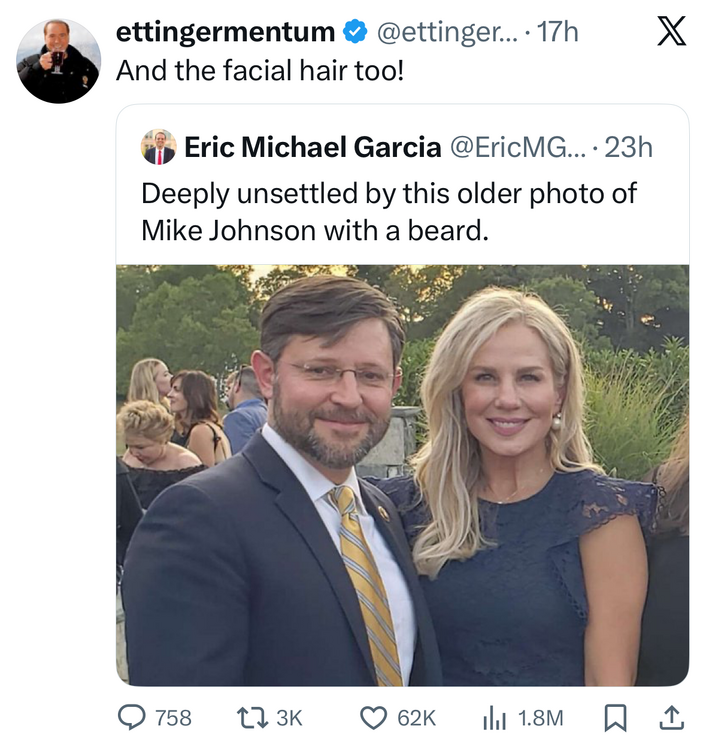Everything posted by Bozo_Casanova
-
Trump’s America
- Trump’s America
That’s German scouts.- Election Day 2025
One of the most interesting phenomena in local politics is the nearly perfect overlap of people who demonstrate a reactionary anger about multi-modal transportation planning and people who think wishing away the homeless can work.- Government Shutdown 2025: This Time It’s Personal
This is just a snapshot in time- those are the dates that count and nobody is going to remember the shutdown either way. What will matter if whether Democrats take their feet off the gas, Kamala Harris visit to Tennessee would be an example of the kind of mistakes they have to avoid between now and 2026.- Government Shutdown 2025: This Time It’s Personal
Agreed that’s not his lane, but of interest, it seems there’s a discharge petition very close to the required number of votes in the house and the president has already signaled that they may need to extend the subsidies.- The Worst Trade in NBA History: Luka traded for AD
I can help you with this. You ask silly questions because you don’t know ball, the team you root for is likewise the product of NBA fuckery, and you should feel bad. Luka Doncic came into a grand total of one season in bad shape in part because he was worn down from leading the Mavs to the finals and subsequently playing hurt for his country’s national team. He was spectacular for the lakers after he came back from his injury and now, given a full offseason to rest and recover with a world class training staff like the one Nico fired 2 years ago he’s lighting up the league. You don’t trade that guy. Someday I hope Seattle steals your team back.- Wordle [spoilers inevitable but discouraged]
Wordle 1,621 4/6 ⬜⬜🟨⬜🟨 ⬜⬜⬜⬜🟩 ⬜🟩⬜🟩🟩 🟩🟩🟩🟩🟩- Government Shutdown 2025: This Time It’s Personal
Just checking in with the bedwetting squad, any of you still think the Dems lost?- The Worst Trade in NBA History: Luka traded for AD
Did a quick perusal of Lakers Twitter this morning and it’s very strange- they seem to think that the pick they traded to Dallas with AD and Christie was the Flagg pick and therefore they earned this. Truly the most undeserving, frontrunning, spoiled, graceless fanbase in sports. Laker fans make Man U supporters seem like Cheeseheads.- Political Cartoons - The Politics Thread.
- Trump’s America
- 2025/2026 TDAY, XMAS, NYE, NYD Menu/Pron Thread
- Wordle [spoilers inevitable but discouraged]
Wordle 1,620 5/6 ⬜⬜⬜🟨⬜ ⬜⬜⬜🟩🟨 ⬜🟩🟩🟩⬜ ⬜🟩🟩🟩⬜ 🟩🟩🟩🟩🟩- Trump’s America
- Trump’s America
Sadly, he is not. He is an astronaut. A colorful bunch.- Texas -- a failed state
Carter is like Temu Roger Williams- The Leopards Eating Faces and Unlubed Dildo of Consequences Thread
Lol Dems in disarray - NYT, probably- Texas -- a failed state
Carter.- Government Shutdown 2025: This Time It’s Personal
I was talking to the TSA agents at the gate this morning. Most have been paid but some still haven’t. Evidently not everyone was loaded into the ACH file and didn’t get their back pay yet. Haply Thanksgiving!- Government Shutdown 2025: This Time It’s Personal
BELOW EPSTEIN- The Worst Trade in NBA History: Luka traded for AD
Fucking Nico- Texas -- a failed state
Dickheads- Texas Rangers 2025-2026 Offseason
In return for 5 years of JAG? I don’t think we lost the trade, I’m just not sure what it got.- Wordle [spoilers inevitable but discouraged]
Wordle 1,619 3/6 ⬜🟩⬜⬜⬜ ⬜⬜⬜⬜⬜ 🟩🟩🟩🟩🟩- Texas Rangers 2025-2026 Offseason
More total payroll though. - Trump’s America
Football ...
Basketball ...
Baseball ...
Other Sports ...
Futbol ...
🤫995🤫 ...
Gambling ...
Movies & TV ...
Music ...
Hobbies ...
Lulz ...
Food & Travel
...
Daily Texan ...
Business & Markets ...
Cloak Room ...
Help ...
For Sale ...
Board Discussion ...
Advertise...
Tailgate Donations
Back to top









